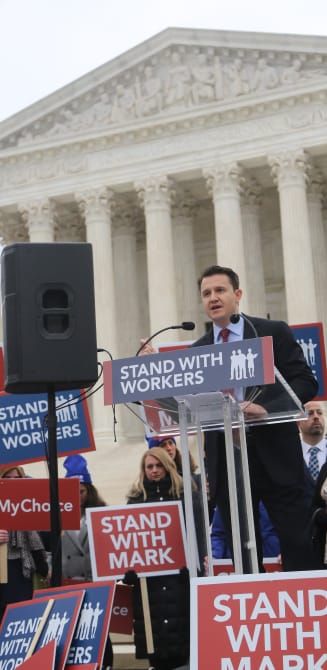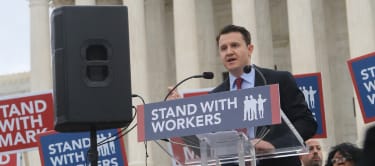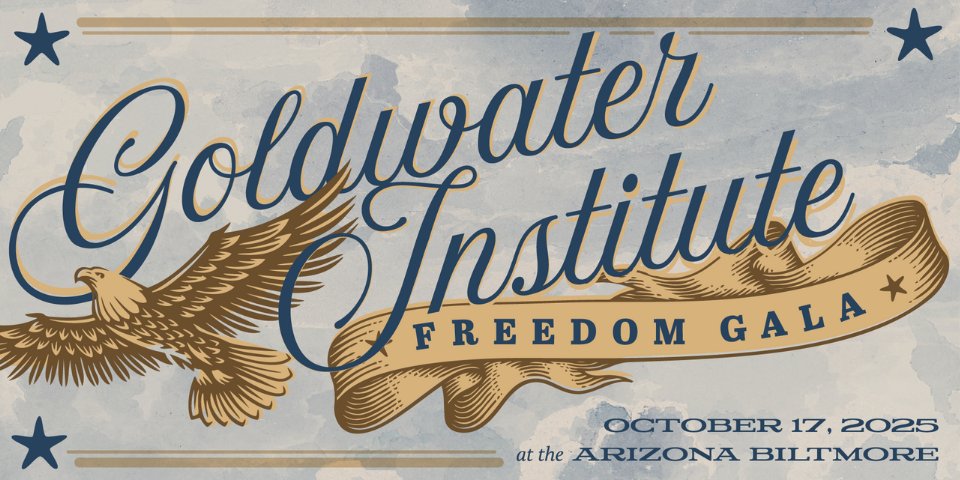Arizona residents shouldn’t need a law degree to figure out where they can place a “for lease” sign or if they can hold up a sign on the sidewalk. But thanks to complicated and confusing city ordinances, placing a sign a foot too far to the left or the right could mean the difference between whether it is legal or illegal. In early April, the Goldwater Institute released a new policy report that explains how cities and towns across the state should revise their sign codes to make them clear and constitutional.
That’s an urgent task because last year the U.S. Supreme Court ruled in Reed v. Town of Gilbert—yes, Gilbert, Arizona—that restricting signs based on what they say violates the right to free speech guaranteed by the First Amendment. This means sign codes must treat all signs alike, without regard to the messages they convey. But eliminating content-based restrictions should only be the first step cities take.
One problem is that sign codes are just too complicated. Tucson’s sign code is 170 pages, a labyrinth of cross-referenced sections, and different rules depending on what messages signs convey. It’s hard for even the most experienced lawyers to navigate. To cite just one example, Tucson’s code defines eight different types of real estate signs: real estate announcement signs, real estate construction signs, real estate development signs, real estate directional signs, real estate for sale or lease signs, real estate project identity entrance signs, real estate rental development signs, and real estate subdivision signs.
The distinctions between these eight varieties are based exclusively on what the signs say. A real estate announcement sign, for example, contains contact information and opening dates, but a real estate construction sign includes only the contact information for contractors, subcontractors, engineers or material suppliers. A real estate development sign is supposed to provide directions to the premises of a subdivision, but a real estate directional sign is intended to direct prospects to the unit that is for sale. How the land is zoned, how much frontage a lot has, or what street it’s on, among a host of other cross-referenced criteria, determine whether a sign is legal or illegal. And this is just for real-estate signs. We haven’t mentioned the dozens of other definitions in Tucson’s sign code, ranging from low profile freestanding signs to incidental signs, signs containing the “you are here” symbol, and “miscellaneous” signs.
Unfortunately, Tucson’s code needs to be almost entirely rewritten. Such confusing rules hinder advertising and economic growth—and violate the First Amendment.
Other Arizona cities fare little better. Chandler’s sign code is only 26 pages long, but it’s no more clear—or constitutional. Chandler does not allow non-public signs—a term not defined in the code—in public rights-of-way, but state law requires the city to allow political signs in public rights-of-way and sign-walkers on city sidewalks. The city also allows Grand Opening signs without a permit, but requires permits for other types of signs. A Grand Opening sign is a sign that “calls attention to a new business.” On the other hand, a real estate “for lease” sign that invites new businesses to locate in Chandler is censored.
These content-based definitions for various categories of signs are just as unconstitutional as Tucson’s.
Some Arizona cities are taking steps to modernize their sign codes. But as they do so, city officials must navigate both state and federal constitutional guarantees. When crafting new sign codes, the most important things to keep in mind are:
- If a sign code requires government officials to read the sign to determine whether it violates the code, then the code is probably content based and violates the First Amendment.
- Businesses have free speech rights too. Cities cannot treat commercial messages differently than other types of messages.
- Under Arizona law, signs must be allowed in public rights-of-way and sign walkers cannot be barred from holding signs on sidewalks.
- Speech cannot be restricted for no good reason. If a local government determines that removing or allowing a particular sign is integral to traffic safety, it must provide clear evidence that justifies that determination.
The Goldwater Institute is available at no cost if local government officials need help making their sign code constitutional. If you’d like a copy of the report, Heed Reed: Goldwater Institute’s Guideposts for Amending City Sign Codes, please contact the Goldwater Institute.










